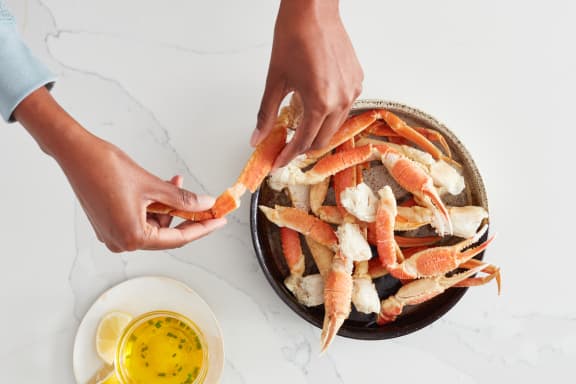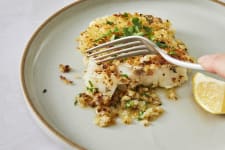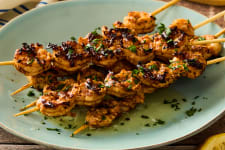
The Subtle Art of Seasoning Snow Crab
September 25th, 2020Building Big Flavors with Easy Methods
Sweet, delicate, and clean in flavor, the snow white meat of Alaskan snow crabs is an easy-to-like protein to welcome into your wild-caught recipe rotation. Alaskan snow crab meat is delicious when prepared simply, ready to enjoy once thawed without any additional seasonings.
However, to keep things interesting and expand the culinary possibilities when cooking with snow crab, you’ll want to learn the subtle art of seasoning this tasty crustacean. Whether you’re steaming, boiling, grilling, or baking, your cooking method is going to determine the best way for you to season your snow crab legs.
If You’re Steaming Your Snow Crab
For the purest, most minimal preparation of your snow crab legs, you’ll likely decide to steam the crab since steaming in quick, moist heat preserves the moist, tender texture of fresh, high-quality crab meat. The inherent sweetness of snow crab meat will shine through easily.
That doesn’t mean you can’t enhance this sweetness with some subtle seasoning. There are a few ways to go about steaming snow crab (which you can learn all about in our blog post on the subject), but in each instance, simply adding in several slices of fresh lemon to your steaming medium will add aromatic freshness to the crab meat. As an alternative, you can use lime or even orange slices, depending on which direction you want to take your overall flavor profile. The fragrant compounds trapped within the peels and pulp of citrus fruits only need a few minutes in hot water for these aromas to be lifted up into the steam that cooks your crab legs.
To add a little more complexity to your steamed crab seasoning, use a 50/50 mix of water and wine — any white or rosé will do, nothing too precious — as your steaming liquid. The aromas of the wine will give your crab legs a hint of floral, herbaceous, citrusy, or pleasantly bitter notes, depending on which flavors are characteristic of the wine you choose. Mixing the wine with the water, rather than using wine on its own, prevents the steaming liquid from burning off too quickly.
You can also go bold with seasoning steamed crab meat by tossing the warmed legs in a flavorful butter mixture of your choice right before serving them up: butter infused with garlic and herbs, butter spiced with Old Bay or a seasoning blend of your choice (try Chinese five spice), or even olive oil if butter isn’t your thing. Just make sure you’re adding this buttery mixture after you’ve steamed the legs, and while they’re still warm.
If You’re Boiling Your Snow Crab
For a more robust crab dish, you’ll want to boil your crab legs in a high-flavor broth so that the meat is infused with the seasonings you’ve added to your pot.
To get the most out of boiled snow crab legs, you’ll want to work with a broth that is flavorful enough to justify boiling the crab in the first place, since boiling strips some of the sweet and salty nuances from the crab meat.
Use enough water to fully submerge your crab legs, then add enough salt to the water so that it tastes like the ocean; that way, you won’t be losing the natural saltwater seasoning of the meat as it boils. To this water, you can build a simple broth with peppercorns, bay leaves, garlic, and something like a crab boil seasoning mix; use the amount of seasoning mix recommended by the manufacturer, or make your own by following this easy recipe from Epicurious. Allow the water to boil for a few minutes with these components so that they have a chance to open up and infuse, then add in your crab legs to warm through and soak up all the yummy goodness you’ve assembled in the broth.
As an alternative, if you’re using your crab in a curry, cioppino, or similar style of stew, simply add your crab legs into the pot — preferably thawed, but frozen is fine too — in the final moments of cooking this meal; essentially, you want to give the crab meat just enough time to warm up and mingle with the flavors of the dish so that the crab stays moist, tender, and delicious.
If You’re Grilling or Baking Your Snow Crab
For fuss-free cookouts out back or cozy nights indoors, you might decide that the oven or grill is the way to go in reheating your crab legs.
When using dry forms of heat, it’s critical for you to consider how to warm up your snow crab legs without drying out the delicate meat encased inside the shells. Using butter as the main component of your seasoning, in this case, gives you a two-for-one punch by adding flavor as well as moisture to the legs — but you just need to know how to get that butter into the shells so that it can effectively baste the crab meat.
Whether you’re grilling or baking your snow crab legs, to season them with butter you’ll need to split open the shells with some kitchen shears to reveal the meat inside; you’ll have to use thawed rather than frozen crabs to do this. The shells of snow crab legs are relatively thin and uniform aside from some gentle spikes, so this should be easy to manage.
Once the shells are open, arrange the crab legs so that the meat is facing up on either a rimmed baking sheet, casserole dish, or directly on a heated grill. Using plain butter, butter mixed with herbs or spices, or whatever fat and flavor combo you fancy, add a layer of this seasoning deliciousness to your snow crab legs; a brush is helpful if you’re grilling, or simply drizzle melted butter onto the legs if you’re using your oven.
Anywhere between 425 and 450 degrees is good if you’re using the oven to warm up the crab, and your grill should be warmed to medium or medium high heat — basically, you just want your heat hot enough to quickly penetrate the crab shells. As an alternative to a hot grill, you can try the low and slow approach recommended by Hey Grill, Hey for a smokier result.





